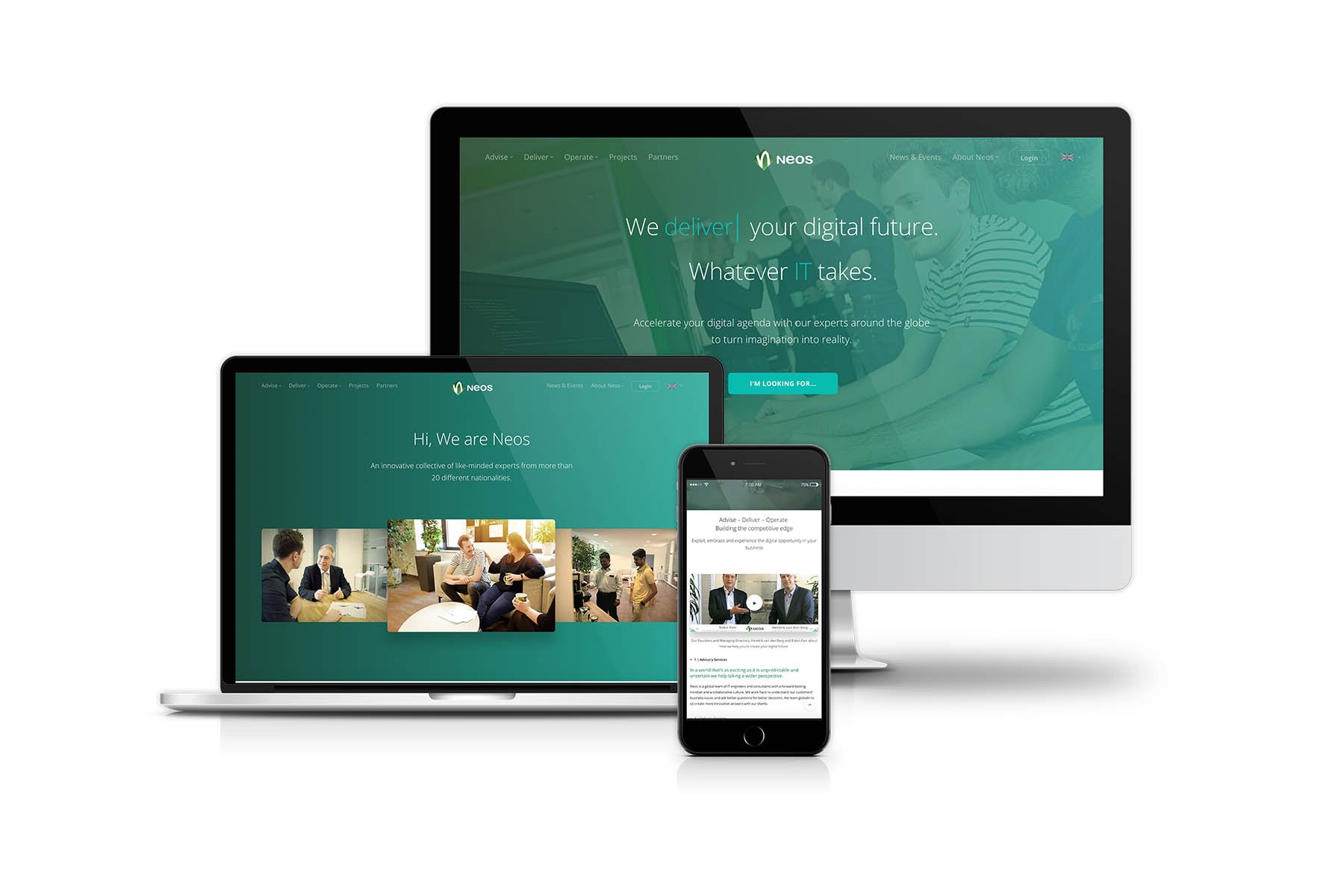
In 2018, Neos launched a website using native AWS services. In addition to a better user experience, the new website featured new functions like contact forms, updated pictures and videos, easier navigation and fresh content like whitepapers, case studies, infographics and blog articles.
How our website project started
Our former Neos website was mostly used to provide information about Neos as a company, the Neos team and career opportunities. While this information was needed, it became clear that the old website was not designed to attract and convert new leads. We needed a website that attracts potential customers and became clear that we needed to revamp the entire website to get there.
Technical limitations
Very soon, we realized that we were constrained by the technical debt of the old website. We used a hosted WordPress instance in our on-premise datacenter which was heavily customized according to outdated requirements. We also had very few WordPress templates and our content was not easy to change. Adding new templates was even more complicated. On top, the website design was outdated, and it was not at all SEO optimized.
Moreover, because we hosted the WordPress instance ourselves, we had to also manage the infrastructure, operating system and middleware it was running on. It was not uncommon that after patching the instance, our website went down or performance deteriorated. Our internal resources had to spend time on managing the WordPress instance rather than working on value-adding activities for our customers. Finally, the response time of our website varied across geographies and, because it was hosted in Europe, users in other geographies experienced longer response times that made it difficult to interact with the content.
In general, we were concerned that all these issues combined were hurting our credibility with potential customers.
Our business requirements
It was important to us that we don’t just migrate the existing website and lift and shift the underlying infrastructure, but rather build a new solution which meets our business needs. We wanted to create a modern website that offers an improved user experience and better performance. Our Marketing team wanted to create attractive landing pages, create and edit relevant content, run marketing campaigns and convert website visitors to leads. The team also was budget cautious and wanted to relieve our internal resources from working on WordPress maintenance tasks.
Moving to the Cloud
We wanted to act fast, so considering all these requirements, ease of deployment, scalability and reliability of the service and reduced infrastructure management overhead, we decided that migrating our website to the AWS Cloud is the best option.
We reviewed the website structure and revamped the HTML code, optimizing it for SEO. We choose AWS services, as they provided us with a very easy start and the native services were simple to adopt and use. They made the change easy for us. We created a CI/CD pipeline syncing the static pages from our GitHub account to an S3 bucket. We then set up Amazon CloudFront to provide SSL offloading, URL redirection and caching at edge locations for optimal website response times. Finally, we built a Lambda function accepting POST data from contact forms and using GoogleCaptcha for sanity and anti-spam checks.
In just under a month we had a new static website hosted in AWS which was available with very little latency for customers both in APAC and Europe. We retired our hosted WordPress instance, freeing up our internal resources to deliver value for customers and decreasing our website Total Cost of Ownership.
At the same time, as the new website was taking shape, new marketing campaigns with landing pages to convert page visitors were launched. With a focus on SEO-optimization and lead-generation the foundation has been laid to generate new contacts based on organic search traffic (SEO), paid search traffic (SEA) and social media traffic (Twitter, LinkedIn, Facebook, YouTube). Detailed weekly reports help us to improve on our performance.
And just like that, we were able to kick off a cloud migration projected. Setting up a CI/CD pipeline for deploying AWS resources gave us a taste of how Cloud could help us and our customers.

